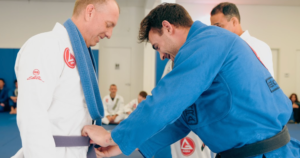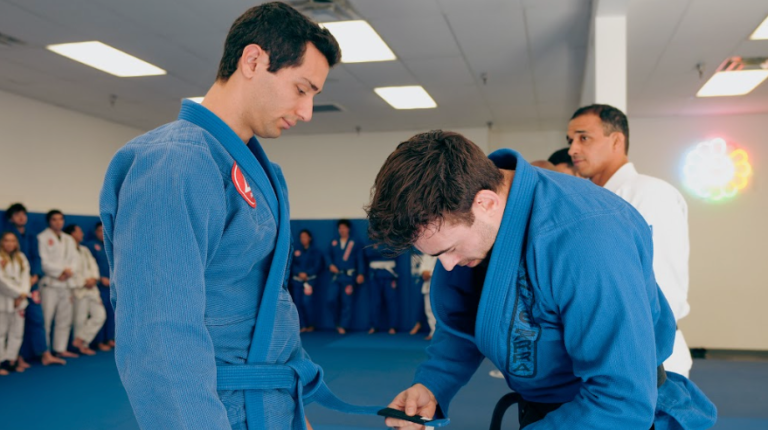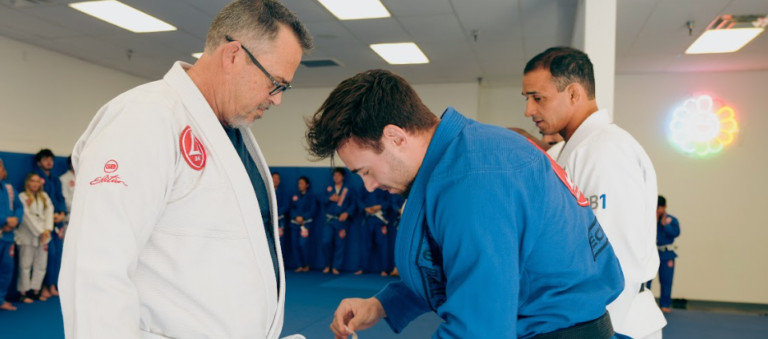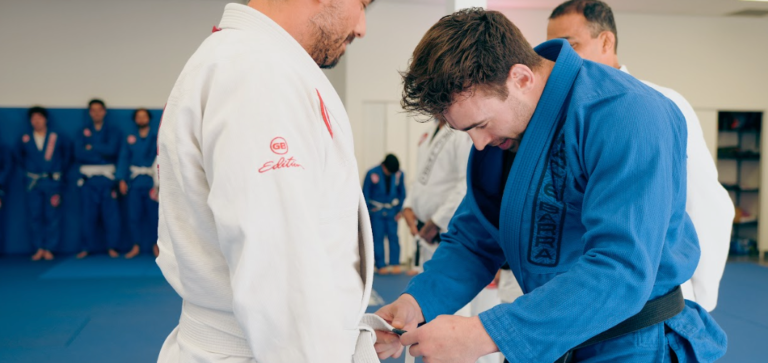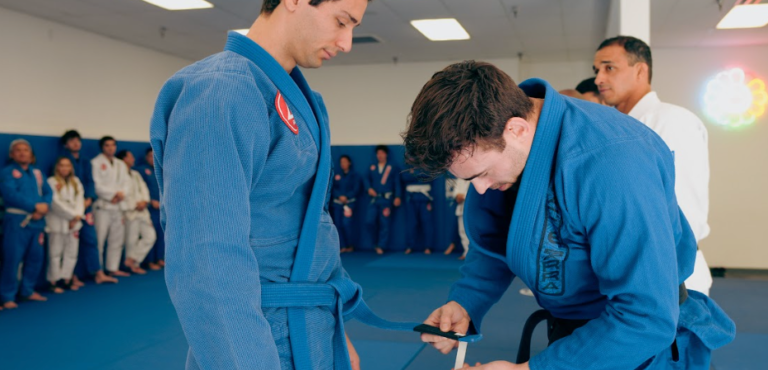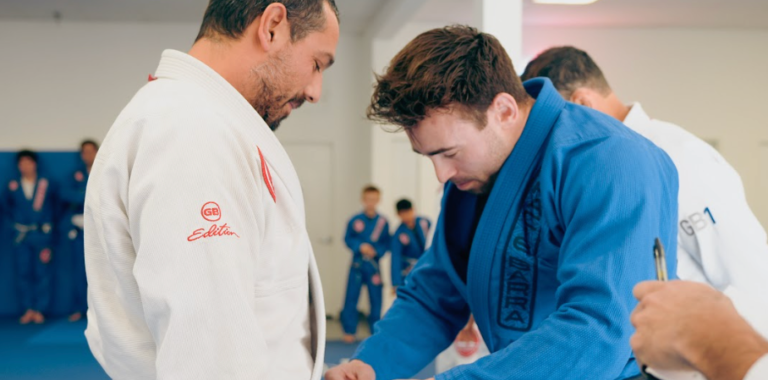How Does the BJJ Belt System Work at Gracie Barra?
The belt system at Gracie Barra is a structured and systematic process that guides a student’s journey from a complete novice to a seasoned martial artist. It is based on the standards set by the International Brazilian Jiu-Jitsu Federation (IBJJF) and is designed to measure a student’s dedication, technical skill, and personal growth.
Here is a detailed breakdown of how the belt system works at a Gracie Barra academy:
- The Belt Hierarchy: A Path to Mastery
The adult belt system (for ages 16 and up) consists of five main belts, with each color representing a different level of proficiency. The progression is as follows:
White Belt: The starting point for every student. The primary goal at this stage is to build a solid foundation of fundamental techniques, understand basic concepts, and learn how to move your body efficiently. This is often the fastest belt to progress through.
Blue Belt: This belt signifies that a student has a functional understanding of the art. At this stage, you begin to expand your technical knowledge, refine your fundamentals, and start developing a personal “game.” This is often a challenging period, as the learning curve can feel steeper.
Purple Belt: A purple belt is considered a very competent and dangerous grappler. At this level, students are expected to have a deep understanding of advanced techniques, transition from a novice to an expert, and begin to refine their own unique style.
Brown Belt: This belt represents an expert level of knowledge and skill. Brown belts are expected to master the art, polish their techniques, and begin to demonstrate an ability to teach and mentor others.
Black Belt: The gold standard in BJJ. A black belt signifies a master of the art who can execute techniques with a high degree of proficiency. At Gracie Barra, a black belt is also seen as a leader and a role model with the responsibility of sharing their knowledge and upholding the values of the art.
Red Belt: Awarded to individuals who have achieved the highest level of mastery and have made a significant contribution to the art. This is an honor held by only a few.
- Stripes: Acknowledging Incremental Progress
Each belt has four stripes, which are awarded to mark continuous progress between full belt promotions. Stripes are a way for instructors to recognize a student’s hard work and signal that they are on the right track. The criteria for awarding stripes can vary slightly between academies, but they are generally based on a combination of factors:
Consistent Attendance: Regular mat time is crucial for skill development.
Jiu-Jitsu Knowledge: The student’s understanding of concepts, techniques, and their ability to execute them.
Behavior and Attitude: Respect for the instructors, training partners, and the academy’s culture is a key part of the promotion criteria.
Performance in Sparring or Competition: Some academies also consider a student’s performance in live training or tournaments.
- Promotion Criteria and Time Requirements
Belt promotions at Gracie Barra are not based on a single test or a rigid schedule. They are awarded by the instructor’s discretion based on a student’s overall development. While the time it takes to progress can vary, Gracie Barra academies generally follow minimum time requirements for each belt, as set by the IBJJF:
White to Blue Belt: Typically, a student can expect to spend about one to two years at the white belt level.
Blue to Purple Belt: This transition often takes two to three years of consistent training.
Purple to Brown Belt: The average time spent at purple belt is one to two years.
Brown to Black Belt: It generally takes a minimum of one year to transition from brown to black belt.
It’s important to note that these are minimums. The overall time it takes to earn a black belt can vary widely depending on the student’s training frequency, dedication, and natural aptitude. The entire journey from white belt to black belt can take anywhere from 8 to 15 years, if not longer.
- The Belt System for Kids
Gracie Barra also has a distinct belt system for children (ages 4-15) that focuses on safety and fun.
White Belt: The starting point for all kids.
Gray, Yellow, Orange, and Green Belts: These are the intermediate belts for children. As a student progresses, they earn stripes and new belt colors.
Transition to Adult Belts: A student who turns 16 while holding a green belt typically transitions directly to a blue belt in the adult system.
In conclusion, the Gracie Barra belt system is a comprehensive and structured roadmap for a student’s journey in BJJ. It is a tangible way to measure progress, set goals, and instill the values of discipline, respect, and perseverance.
How Does the BJJ Belt System Work at Gracie Barra?
Route
Gracie Barra Northridge Brazilian Jiu-Jitsu & Self Defense
Phone: +1 818-357-4074Secondary phone: +1 818-357-4074
Email: info@gbnorthridge.com
URL: https://gbnorthridge.com/
| Monday | 12:00 PM - 9:00 PM |
| Tuesday | 12:00 PM - 9:00 PM |
| Wednesday | 12:00 PM - 9:00 PM |
| Thursday | 12:00 PM - 9:00 PM |
| Friday | 12:00 PM - 7:00 PM |
| Saturday | 9:00 AM - 2:00 PM |
| Sunday | Closed |

